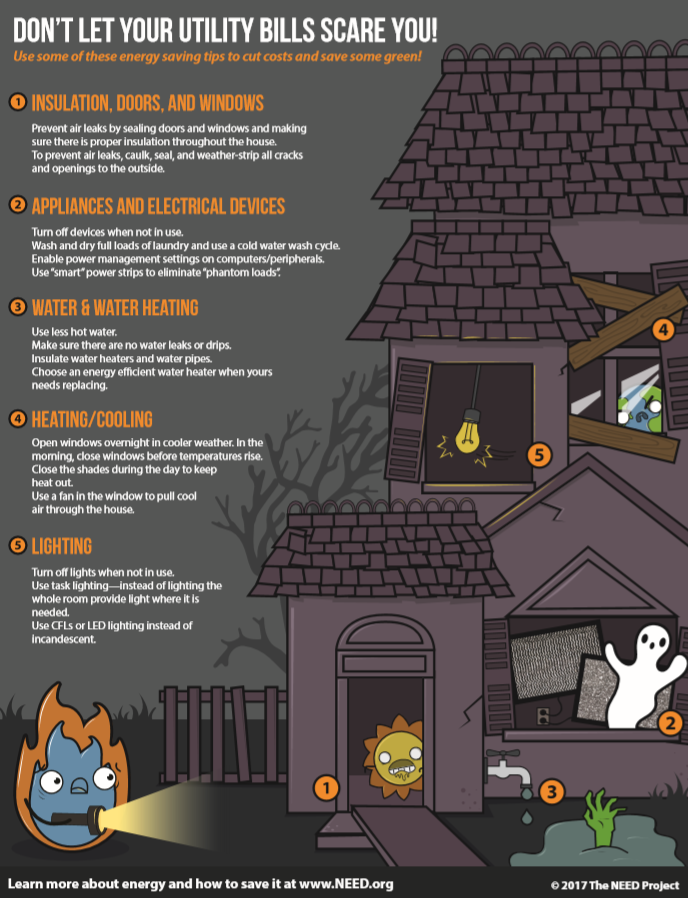Don’t let your utility bills scare you!
The month of October means football season, pumpkin foods and drinks, Halloween decor and costumes and many other fun seasonal changes we welcome every year.
While we’re excited for all things autumn, Cabot is welcoming October for another reason. On September 1991, President George Bush declared October as National Energy Awareness Month, encouraging the awareness of sustainably while managing our energy resources.
Energy Efficiency Tips for Fall
The United States may have an abundance of affordable and reliable energy sources, but as citizens, we should still be mindful of our consumption and take appropriate steps to curb our usage.
The NEED Project incorporated some Halloween themed graphics and the Alliance to Save Energy outlined a few ways to help reduce our consumption and lower our energy bills in the process:

Energy Audit
An energy audit is a great first step to increasing energy efficiency at home. An audit can help explain energy consumption, identify losses and evaluate possible improvements. Professional auditors perform thorough audits using a variety of techniques and equipment, and many include a detailed assessment with careful examination of the residence and past utility bills. It’s also possible to perform a simple energy audit at home without hiring a professional. By taking the time to analyze energy consumption and implementing efficiency upgrades, consumers can save up to 30 percent on utility bills.
HVAC System Maintenance
During the fall, cold temperatures cause electricity bills to increase due to the continuous use of heating systems, which account for 42 percent of residential energy use. It can be tempting to turn up the heat as temperatures drop, but consumption can be minimized by ensuring HVAC systems are properly maintained. Dirty filters can slow airflow, making the system work harder, wasting more energy. Air leaks and improper insulation can be another major source of heat loss. Consumers can reduce heating bills 20 percent by checking air leaks around walls, ceilings, windows, doors, fixtures, switches, and electrical outlets. Even better, install a programmable thermostat to prevent unnecessary energy use and improve those savings by an extra 10 percent.
Check for Cracks, Leaks and Drafts
Air leakage occurs because of cracks or gaps in windows, doors, and walls and can lead to higher monthly energy rates because it lets heat escape and cold air enter. Before it gets too cold, it’s important to check all your doors and windows for air leakage that could keep your heater running overtime. If your front or back door has space between it and the floor, add weather stripping to the bottom or use caulk to seal the gap. This will prevent excess heat from escaping and could keep your heater from running up your energy bill. Also, be sure to check out the exterior of your home – it’s common to find gaps or cracks around windows and doors or where different building materials meet.
Let Light & Heat from Windows Inside
Let the sun do some of the heating for your home! Before you go to work, open the blinds or curtains of south-facing windows, allowing the sun to warm the room while you’re gone. When you get home, don’t forget to close them to lock in that free heat. In areas where your home doesn’t get much sun, keep your curtains and blinds closed to trap in the heat.
Download the helpful Energy Awareness Month tips with this spooky looking flyer via The NEED Project.
